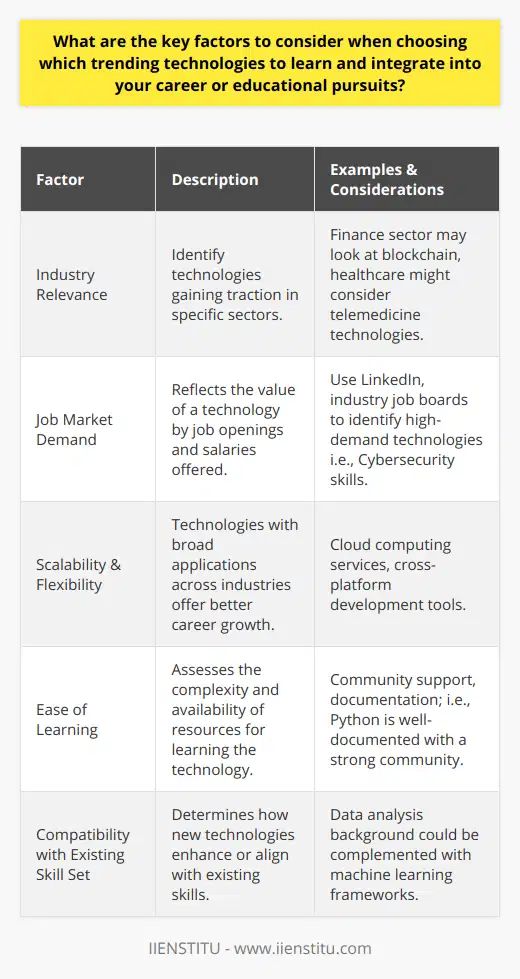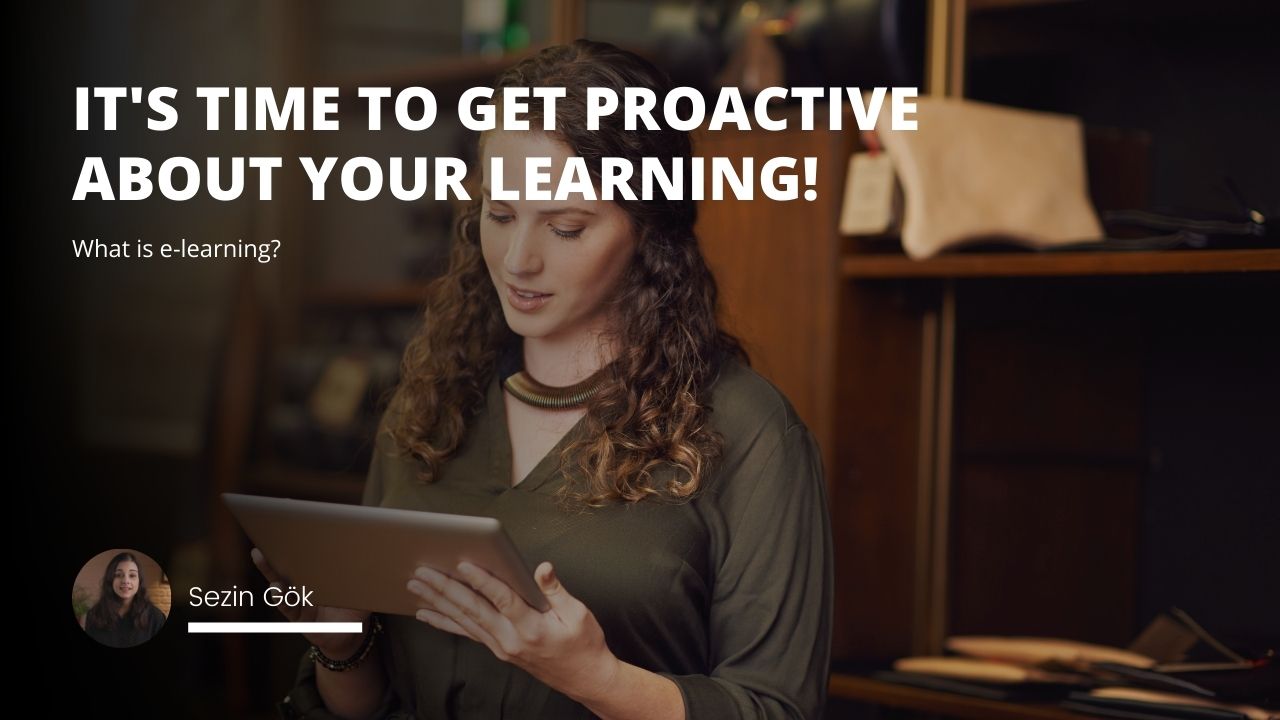
With technology becoming increasingly advanced every day, it's no surprise that the way we learn is changing too. Here are five new tech trends that will significantly impact how we know in the future.
Five ways technology is changing the way we learn.
Learning has never been more accessible. The modern-day student is no longer bound by space and time constraints, as they can learn at their own pace from anywhere with an internet connection! Technology also allows us to access more resources than ever before - meaning there's even less excuse for not doing your homework or plagiarizing other people's work online these days.
1 - Virtual reality will allow students to explore different parts of the world without leaving their classrooms.
Virtual reality has the potential to transform education by providing students with immersive, hands-on learning experiences. VR technology can transport students to different parts of the world, giving them a chance to explore distant cultures and historical periods.
With VR, students can also visit places that are too dangerous or difficult to reach, such as the bottom of the ocean or the surface of Mars. In addition, VR can be used to simulate real-world situations, providing students with opportunities to practice skills like public speaking or surgery.
As VR technology continues to evolve, more and more schools will likely incorporate it into their curriculum. Ultimately, VR has the power to make learning more engaging and effective for students of all ages.
Virtual reality can provide students with immersive, hands-on learning experiences.
VR technology can transport students to different parts of the world.
VR can be used to simulate real-world situations.
VR has the power to make learning more engaging and effective for students of all ages.
2 - Augmented reality will help teachers bring textbooks to life by adding interactive elements
Augmented reality (AR) is another new technology that has the potential to revolutionize education. AR allows users to view digital information in the real world by overlaying it on top of their surroundings.
For example, a history teacher could use AR to superimpose images of ancient buildings or artifacts over a classroom textbook, bringing the past to life for their students. A
dditionally, AR can be used to create interactive games and simulations that make learning more fun and engaging for students. As AR technology continues to develop, we will likely see more and more schools incorporating it into their curriculum.
AR brings the past to life for students, making learning more engaging and fun
AR can be used to create interactive games and simulations
AR technology is continuing to develop, so more and more schools are likely to start incorporating it into their curriculum
AR has the potential to revolutionize education
3 - Learning through games will make school more fun and engaging for students
Games have long been used as a tool for teaching new concepts to children. However, with the rise of new technologies, games are now being developed that can be used to teach adults new skills.
For example, there are now games that can train surgeons or soldiers. Additionally, a growing number of educational games are designed to help students learn specific subjects, such as math or history. Games can be an effective way to engage students and make learning more fun. In addition, games can provide immediate feedback that can help students improve their performance.
As game-based learning becomes more popular, we will likely see more and more schools incorporating it into their curriculum.
Games are an effective way to engage students and make learning more fun.
Games can provide immediate feedback to help students improve their performance.
As game-based learning becomes more popular, it is likely that we will see more and more schools incorporating it into their curriculum.
With the rise of new technologies, games are now being developed that can be used to teach adults new skills
4 - Technology will enable personalized learning for each student, based on their needs and interests
With new technologies, students are no longer restricted to the one-size-fits-all approach to education. Instead, they can now receive instruction tailored specifically to their needs and interests.
For example, online programs can now assess a student's level of understanding and provide them with customized content accordingly. Additionally, new technologies can be used to track a student's progress and identify areas where they need improvement. Ultimately, personalized learning can improve educational outcomes by making learning more relevant and effective for each student.
New technologies make personalized learning possible, ensuring that each student receives instruction tailored specifically to their needs and interests.
By tracking a student's progress and identifying areas where they need improvement, new technologies can help improve educational outcomes.
Online programs can assess a student's understanding level and provide customized content accordingly.
New technologies are making it easier for students to learn in relevant and effective ways.
5 - Teachers will need to be trained in how to use new technology tools in the classroom
As new technologies become more prevalent in the classroom, teachers must be properly trained to use them. Technology can be a powerful tool for enhancing instruction, but only if it is used effectively.
Therefore, teachers will need to receive training on integrating new technology tools into their lessons and use them to benefit their students.
Additionally, they will need to be familiar with the different types of new technologies available and how each can be used to support learning. Ultimately, by ensuring that teachers are properly trained in new technology, we can ensure that students can reap the maximum benefits from its use.
Teachers receive training on how to use new technology tools to benefit their students.
New technologies are integrated effectively into classroom instruction.
Teachers are familiar with different types of new technology and how each one can be used to support learning.
Students reap the maximum benefits from using new technology in the classroom.
With virtual reality, augmented reality, and games-based learning becoming more prevalent in education, teachers need to understand how to use these tools in the classroom.
At IIENSTITU, we offer online courses that provide educators with the training they need to harness the power of technology in their teaching practice. We also have various resources available on our website that can help you get started using new technologies in your classroom.
So, if you're interested in learning more about how to use technology to improve student outcomes, please join us for one of our upcoming online courses.

Frequently Asked Questions
Do you believe that new technologies will change the way we learn?
It's hard to say precisely how new technologies will change the way we learn in the future. However, it seems likely that they will play an increasingly important role. We already see a shift from traditional modes of learning, such as lectures and textbooks, towards more interactive and individualized methods. For example, online courses are becoming more popular, and there is an increasing emphasis on personalized learning experiences. In addition, new technologies are making it possible for students to learn at their own pace and in their own time. It is, therefore, likely that new technologies will transform the way we know, making education more accessible and practical.
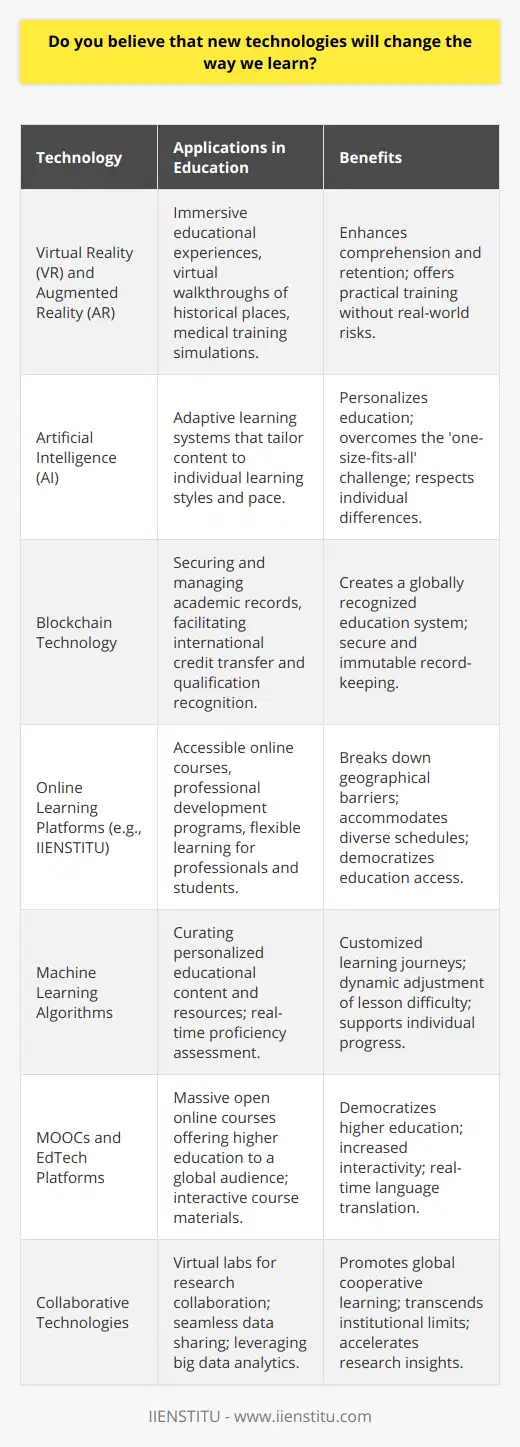
How do you think classrooms will look in the future?
As education evolves, so too do the classrooms in which students learn. Today's classrooms are very different from just a few decades ago, and they will continue to change as new technologies emerge. However, one thing that is likely to remain constant is the need for classrooms to be places where students feel comfortable and engaged. In the future, classrooms may look quite different from what we are used to. They may be more focused on individualized learning, with each student working at their own pace. Or they may be more collaborative, with students working together in small groups or on projects. They may even be virtual, with students logging in from home or another location. Whatever form they take, future classrooms will continue to be places where students can explore, experiment, and grow.
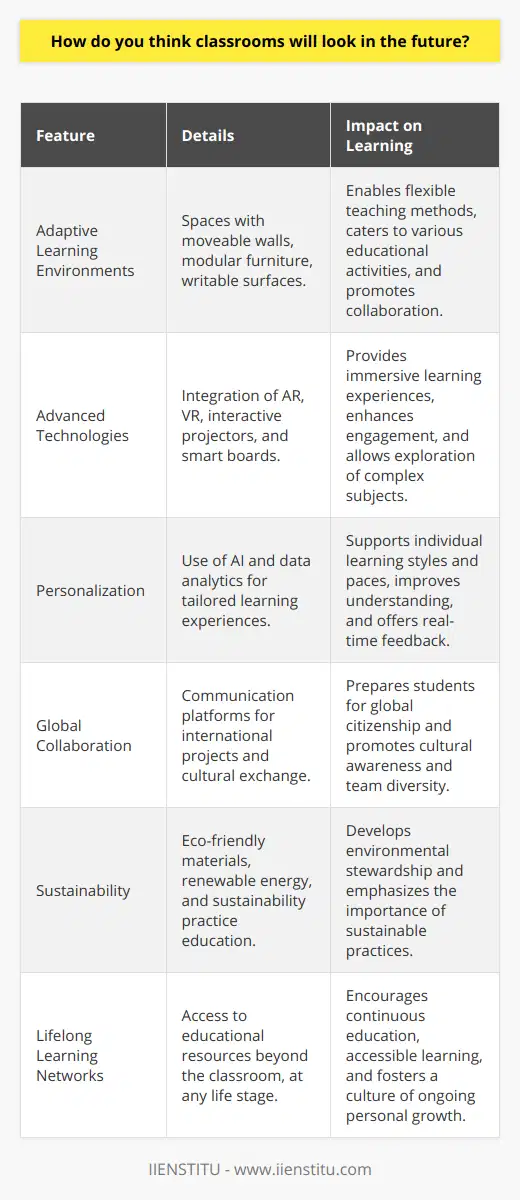
Do you think there is a danger that new technologies will replace teachers?
As our world increasingly comes to rely on technology, there is a growing concern that new technologies will eventually replace teachers. While it is true that technology can provide a wealth of information and resources, there are some things that only a human teacher can provide. For example, teachers can offer individualized attention and feedback, create a supportive learning environment, and inspire students to reach their full potential. In addition, teachers have the ability to adapt their instruction to meet the unique needs of their students. While technology can be a valuable tool in the classroom, it will never be able to replace the important role of the human teacher.
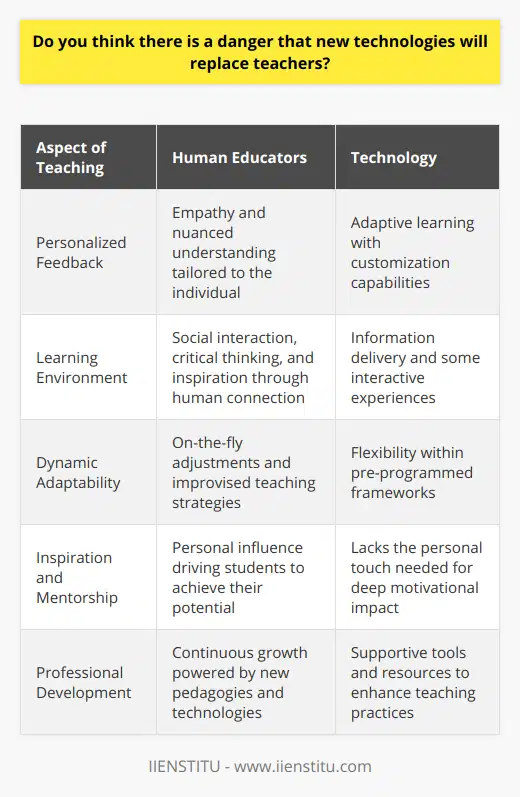
What are the 5 emerging or current trends in information technology that will significantly impact various sectors?
**Trend 1: Artificial Intelligence and Machine Learning**
Artificial intelligence (AI) and machine learning (ML) continue to play a vital role in advancing information technology. These technologies empower businesses to analyze vast amounts of data efficiently, enhance decision-making, and foster innovation.
**Trend 2: Internet of Things**
The Internet of Things (IoT) has become an essential trend in information technology. IoT refers to the interconnected network of devices, vehicles, and appliances that communicate with each other. It promotes real-time data exchange and automation, leading to increased efficiency and reduced operational costs in various sectors.
**Trend 3: Edge Computing**
Edge computing has emerged as an essential technology. It refers to the process of processing data near its origin, rather than relying on a centralized data center. This approach reduces latency and enhances data processing efficiency, proving beneficial for industries that require real-time decision-making, like healthcare and manufacturing.
**Trend 4: Blockchain Technology**
Blockchain technology has gained significant attention due to its potential to bring about a fundamental shift in how data and transactions are managed. By enabling secure, transparent, and decentralized record-keeping, blockchain can revolutionize industries such as finance, supply chain management, and real estate.
**Trend 5: Cybersecurity**
With the increasing digitization of businesses and the growing reliance on technology, the importance of effective cybersecurity measures cannot be overstated. Companies and governments must prioritize protecting their digital assets and consumer data against cyber threats. Emerging technologies, such as quantum cryptography and AI-based threat detection, will play a significant role in enhancing cybersecurity as a trend in the information technology landscape.

Which next-generation IT technologies should be prioritized for learning and development to stay relevant in the rapidly evolving landscape?
Prioritizing Emerging IT Technologies
To maintain relevancy in the swiftly changing IT landscape, it is crucial for professionals to focus on learning and developing skills in next-generation technologies. There are several areas worth prioritizing, such as artificial intelligence (AI), cloud computing, big data analytics, and cybersecurity.
Artificial Intelligence: Unlocking Potential
AI has garnered immense attention in recent years, primarily because of its potential to transform industries and enable new business models. It is essential to develop expertise in machine learning, natural language processing, and deep learning algorithms. These technologies underpin AI systems and propel advancements in automation, intelligent decision-making, and novel user interfaces.
Cloud Computing: Driving Innovation
Cloud computing is the backbone of the modern digital economy, providing scalable, on-demand computing resources. Grasping core concepts like infrastructure as a service (IaaS), platform as a service (PaaS), and software as a service (SaaS) is integral to staying relevant. Furthermore, understanding cloud-native development and multicloud strategies will be advantageous in managing diverse deployments in the field.
Big Data Analytics: Turning Information into Insights
Big data analytics involves processing vast volumes of structured and unstructured data to extract valuable insights. Developing skills in data ingestion, storage, processing, and visualization helps professionals draw informed conclusions from the data. Competence in programming languages such as Python and R, as well as data analytics tools like Hadoop and Spark, is crucial for data-driven decision-making.
Cybersecurity: Safeguarding Digital Assets
With the growing amount of digital transactions and the increasing reliance on connected devices, cybersecurity has become indispensable to businesses worldwide. IT professionals must equip themselves with skills in threat identification, vulnerability assessment, and mitigation strategies. Familiarity with emerging cybersecurity frameworks and regulations helps ensure proper security measures are in place to protect sensitive information.
In conclusion, in the rapidly evolving IT landscape, focusing on learning and development in AI, cloud computing, big data analytics, and cybersecurity will help individuals and organizations stay relevant. These technologies are driving the next wave of innovation and will shape the future of the digital economy. By cultivating expertise in these areas, professionals can unlock new opportunities and contribute to the societal transformation powered by next-generation IT technologies.
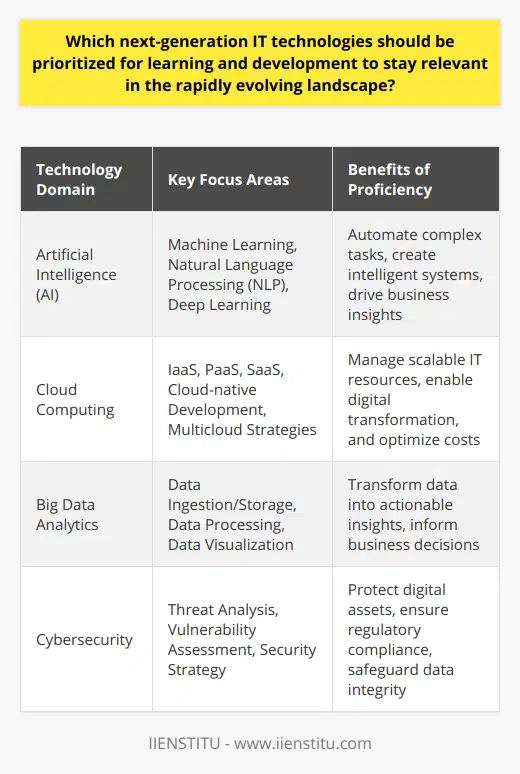
As new and trending technologies become more prevalent, what strategies can be implemented to ensure their seamless integration with existing infrastructures while maximizing productivity and efficiency?
**Understanding Technological Requirements**
A well-executed integration strategy starts with understanding the technological requirements of the new system and analyzing its compatibility with the existing infrastructure. Prior research on software and hardware specifications is essential to avoid potential technical challenges and incompatibilities.
**Employee Training and Support**
To maximize productivity and efficiency, it is important to provide employees with adequate training and support in using new technologies. This also implies aligning organizational processes and workflows with the adopted technological advancements. Training programs and regular updates on best practices help employees adapt quickly and boost their confidence in using new systems.
**Collaboration and Communication**
For seamless integration, fostering a collaborative environment is crucial. Encouraging open communication between departments and team members can minimize resistance to change and improve overall understanding of the new technology's benefits. Active discussions promote shared insights and experiences, facilitating smoother implementation and faster resolution of potential challenges.
**Continuous Monitoring and Feedback**
With continuous monitoring and feedback, it is easier to detect any hiccups during integration. This can aid organizations in making informed decisions and implementing necessary adjustments to ensure compatibility and effectiveness. Regular evaluation of new technology performance and its impact on organizational goals provides insights for modifications and future investments.
**Scalability and Adaptability**
Finally, to achieve seamless integration, organizations should focus on the scalability and adaptability of new technologies. This means championing systems that can accommodate the evolving needs and growth of the organization, facilitating long-term benefits and minimizing obsolescence. Efficient and flexible systems can effortlessly adapt to changes, allowing the organization to capitalize on emerging trends while maintaining existing infrastructure compatibility.
In conclusion, the successful integration of new and trending technologies within existing infrastructures largely depends on understanding requirements, employee training, collaboration, continuous monitoring, and scalability. Employing these strategies can maximize productivity and efficiency while ensuring compatibility with current systems and fostering an environment conducive to technological innovation.

What are the 5 technologies that will change the future of education and workforce development?
**Emerging Technologies in Education and Workforce Development**
**Artificial Intelligence**
Artificial intelligence (AI) will have a profound impact on the future of education and workforce development. AI-powered tools can provide personalized learning experiences, identify potential weaknesses, and recommend targeted resources for both students and workers, thereby increasing the effectiveness of the learning process.
**Virtual Reality and Augmented Reality**
Virtual reality (VR) and augmented reality (AR) technologies are set to revolutionize both education and workforce training. Through immersive simulations and interactive environments, learners will have access to practical, hands-on experiences that can help them gain a better understanding of various subjects and acquire new skills.
**Learning Analytics**
The increased use of learning analytics will enable educators and organizations to collect and analyze data to identify patterns and trends in learner behavior and outcomes. This will allow for the development of targeted interventions, optimizing learning pathways, and improving performance evaluations – all contributing to a more efficient and engaging learning experience.
**Collaborative Learning Platforms**
The use of collaborative learning platforms, such as video conferencing tools, online forums, and shared workspaces, allows for greater opportunities to connect students and workers from different geographical locations. This enhances the exchange of ideas, promotes global collaboration, and fosters increased participation in project-based and experiential learning activities.
**Open Educational Resources**
The rise of open educational resources (OER) offers accessible, high-quality content to students and professionals alike, empowering them to take control of their learning journeys. By embracing OER, educators and organizations can reduce costs, increase flexibility, and facilitate a more student-centered approach to teaching and learning.
In conclusion, these five technologies hold great potential to reshape the future of education and workforce development. They promise to enhance learning experiences, increase access to resources, and offer more personalized, engaging, and efficient pathways for individuals to acquire knowledge and skills. Therefore, educators, organizations, and policymakers must embrace these innovations to foster a future-ready society.
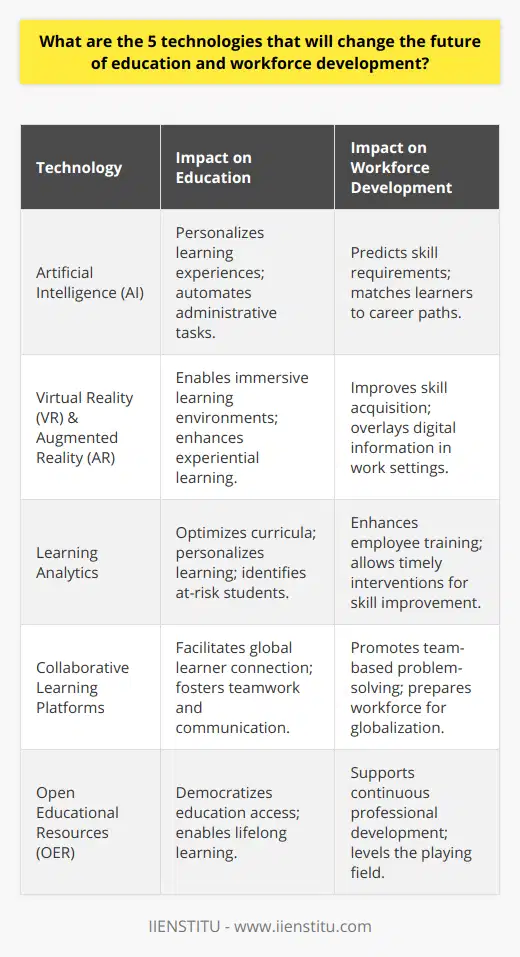
How can the current and emerging trends in information technology be leveraged to create more effective and engaging learning environments?
Integrating IT in Education
One significant way to leverage current and emerging trends in information technology for more effective and engaging learning environments is through the integration of IT into educational practices. This can be achieved by incorporating valuable technologies, such as virtual and augmented reality, into the classroom setting, which fosters increased student engagement, interactivity, and authenticity of learning experiences.
Adaptive Learning Technologies
A major trend in IT is the development of adaptive learning technologies, where AI-driven systems can personalize learning materials based on individual learners' progress and needs. By implementing these systems, teachers can create more effective learning environments that cater to the diverse requirements of students, thereby ensuring they build essential skills and acquire knowledge at their own pace.
Collaboration Tools
Another essential aspect of leveraging IT for educational purposes is the employment of collaboration tools, which facilitate real-time communication, collaboration, and teamwork among students. Such tools create engaging learning experiences while developing essential team-building and interpersonal skills among learners.
Gamification in Learning
Gamifying learning experiences by introducing game elements, such as points, badges, and leaderboards, is another effective method to enhance student engagement and motivation. Capitalizing on the appeal of games, educators can design immersive learning scenarios that stimulate the natural curiosity and competitiveness of students, leading to higher learning achievement.
Real-World Problem Solving
By incorporating real-world challenges into learning activities, IT can provide students with opportunities to apply their knowledge and critical thinking skills in practical contexts. For instance, utilizing digital fabrication tools, such as 3D printers, students can engage in hands-on experiences to design, create, and test solutions for real-life problems, connecting abstract concepts with tangible outcomes.
Encouraging Creativity
Lastly, harnessing the capabilities of digital media, technology can encourage student creativity through multimedia assignments and digitally enhanced projects. Tools like video editing software, graphic design applications, and online presentation platforms allow learners to express their ideas and understanding in new and imaginative ways.
In conclusion, leveraging the existing and emerging trends in information technology can produce more engaging and effective learning environments by fostering interactivity, personalization, collaboration, creativity, and real-world problem-solving opportunities. Such implementations have the potential to revolutionize education and enhance overall learning outcomes for students.
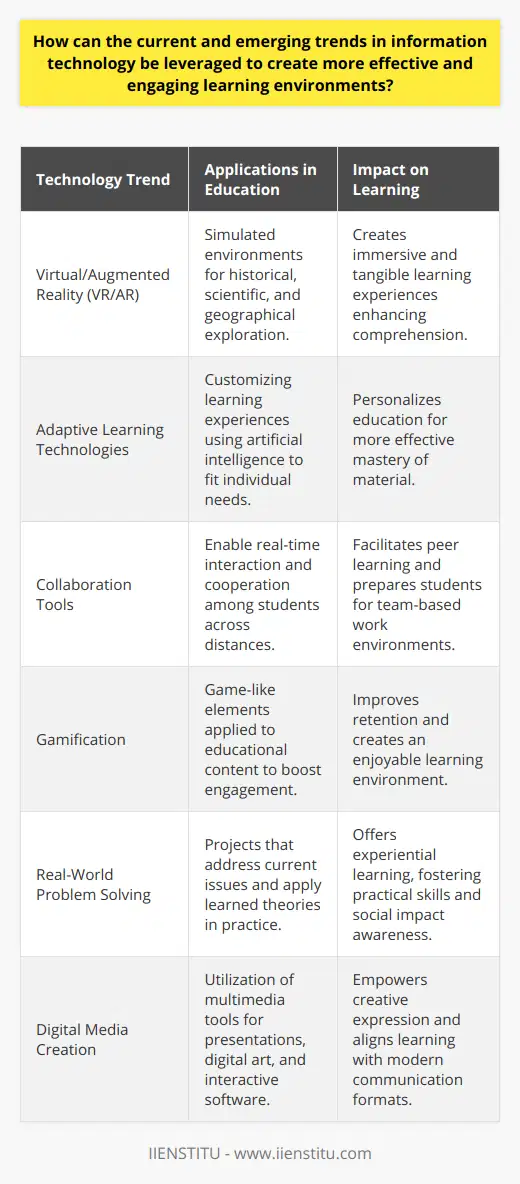
What are the key factors to consider when choosing which trending technologies to learn and integrate into your career or educational pursuits?
Relevance to Industry
A paramount factor when selecting trending technologies to learn and incorporate into one's career or educational pursuits is their relevance to the targeted industry. Analyzing the industry's current technological landscape and potential future developments is essential to identify which skills will make an individual more marketable and remain in demand.
Job Market Demand
Closely tied to industry relevance is the job market demand for professionals with expertise related to specific technologies. Conducting research on job postings, sought-after skill sets, and identifying emerging roles can provide valuable insights into which technology trends are most likely to accelerate the development of one's career.
Scalability and Flexibility
Another key aspect is evaluating the scalability and flexibility of the trending technologies. It is important to understand whether a particular technology can be easily adopted across multiple domains or projects and if it has the potential for long-term growth. Choosing a technology with a wide range of applications and scalability can provide more opportunities for career advancement.
Ease of Learning
The ease with which a technology can be learned should also be considered. Reviewing available resources, such as online tutorials, documentation, and forums, can help one gauge the learning curve associated with a specific technology. Opting for a technology with a wealth of learning materials will facilitate a smoother learning experience and increase the chances of successful integration into one's career or educational pursuits.
Compatibility with Existing Skill Set
Lastly, it is essential to assess the compatibility of the trending technology with one's existing skillset. Aligning the new technology with already acquired skills and knowledge can streamline the learning process and enhance the return on invested time and effort. This alignment can bolster one's professional value and augment the potential for career growth.
By considering factors such as industry relevance, job market demand, scalability and flexibility, ease of learning, and compatibility with one's skill set, individuals can make informed decisions about which trending technologies to pursue. Such a targeted approach is likely to result in more significant career or educational advancements, better preparing individuals for success in various professional domains.
